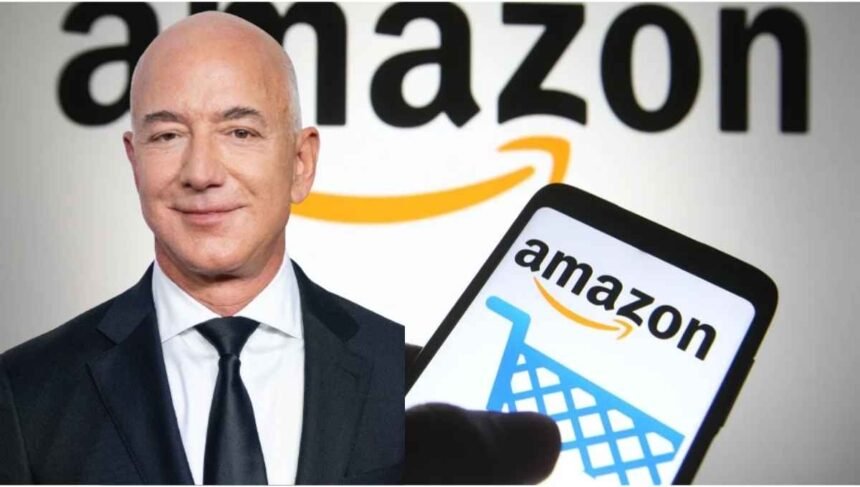Jeff Bezos had a revolutionary vision for transforming Amazon from its early days as an online bookstore to a technology powerhouse that would meet customer demands well into the future.
One of his famed internal mandates centered around transitioning Amazon’s systems architecture in a way that would enable new innovations and scale for decades to come.
Bezos’s Mandate: Create a Service-Oriented Architecture
In a now legendary internal memo in the early 2000s, Bezos decreed “all teams” to “expose their data and functionality” through service interfaces “designed from the ground up to be externalizable.”
This directive heralded Bezos’s vision for Amazon to adopt a service-oriented architecture (SOA) down to every business function. Rather than building monolithic applications, he wanted teams to expose their internal capabilities through modular interfaces and accessible APIs.
This was a paradigm shift. He wanted teams to think outside their silos and build highly scalable web services that other teams could leverage via clearly defined interfaces, without needing to understand their underlying infrastructure or code.
Why a Service-Oriented Architecture?
Bezos had the business acumen to anticipate that Amazon would need the agility to launch new initiatives at internet speeds. An SOA would remove dependencies between teams, allowing them to iterate quickly without waiting on other groups’ release timelines.
Similarly, he foresaw immense scaling demands on Amazon’s systems as their market segments and product offerings exploded in size. Rigid monolithic architectures would buckle under high traffic levels and complex data processing needs. Microservices built independently but working together had intrinsically higher scalability.
Critically, Bezos also had the vision to know that by dogfooding services internally, Amazon could commercialize the most robust and innovative ones as highly profitable external web services in the future.
Moving Mountains: Imposing the SOA Mandate
However, mandating an SOA was easier said than done. At the time, Amazon was already a large company with well-established legacy infrastructure and systems. Teams had limited incentive to invest significant resources to refactor working code just for potential future reuse.
Here is where Bezos demonstrated true leadership. He knew moving a mountain started with literally getting all teams to take the first step in the same direction.
First, he instituted a policy requiring all new code and infrastructure to conform to SOA principles from the start. He also offered compelling incentives, rewarding teams who built services proving valuable for others.
Simultaneously, Bezos was relentless in highlighting at all executive meetings which prominent projects still lagged in adopting SOA best practices. This accountability drove change systematically from the top.
Over several years, Amazon reached an inflection point where nearly all nascent development activity naturally oriented around services-first. Bezos’s vision became reality from the ground up.
Bezos Doubles Down: Mandatory Internal Service Usage
In classic Bezos fashion, he continued raising the bar just as teams reached equilibrium with the last mandate. He next imposed that Amazon teams must not only expose services, but actually integrate and use each other’s services prior to creating proprietary solutions.
This policy, commonly known as mandatory dogfooding, forced teams to actively improve their services’ documentation, monitoring, support and stability to production-grade levels. Only then could internal customers adopt them without disruption.
While injecting short-term inefficiencies, this process transformed select services into such robust products that the idea of commercializing them externally as paid web services took hold.
Amazon Web Services: Born from Internal SOA
The most visible outcome from Bezos’s SOA initiative is undoubtedly Amazon Web Services (AWS), which grew directly from this structured internal incubation.
Several former internal services around storage, computing and databases proved enormously useful across divisions that the concept of opening them for external sale crystallized. AWS, now an industry juggernaut, only exists because Bezos had the prescience years prior to mandate teams to orient around services.
Bezos also fundamentally understood that the long term value in AWS would stem not from existing individual services, but from the organization’s newfound ability to build new categories of services rapidly in any area where a market need appears.
The SOA foundation granting that developmental agility is what has allowed AWS to expand so phenomenally into one frontier after another, from analytics to machine learning, IoT, virtual reality and beyond based on evolving customer needs.
AWS’s runaway success externally continues to validate Bezos’s strategic calls to reorient Amazon internally around services years earlier. This historic sequence highlights Bezos’s leadership foresight at its finest.
Championing a Cultural Ideal: Always Ready for Externalization
The famous internal memo which sparked Amazon’s services transformation concludes with Bezos boldly proclaiming that all services must “be ready to be externalized” in the future.
This cultural ideal underscoring Amazon’s approach to services demonstrates Bezos’s ultimate vision. He championed architecting services positioned not only to improve Amazon’s internal environment but also serve as potentially profitable external products if market conditions aligned.
For Bezos, creating shareholder value and solving customer needs are mutually inclusive goals rather than tradeoffs. Driving this market-oriented design mentality pervasively at the individual team level remains core to Amazon’s organizational foundation today.
Amazon’s ongoing external commercial success indirectly confirms that Bezos’s once bold SOA vision now enshrined internally continues to pay dividends externally. The company’s ability to execute and lead the next waves of change may owe more to bold past strategic calls than recognized.
Bezos’s infamous SOA memo serves as an enduring manifesto highlighting his far-reaching ability to reimagine foundations while forging systems and culture to enable long term thinking.










